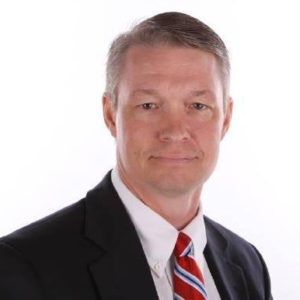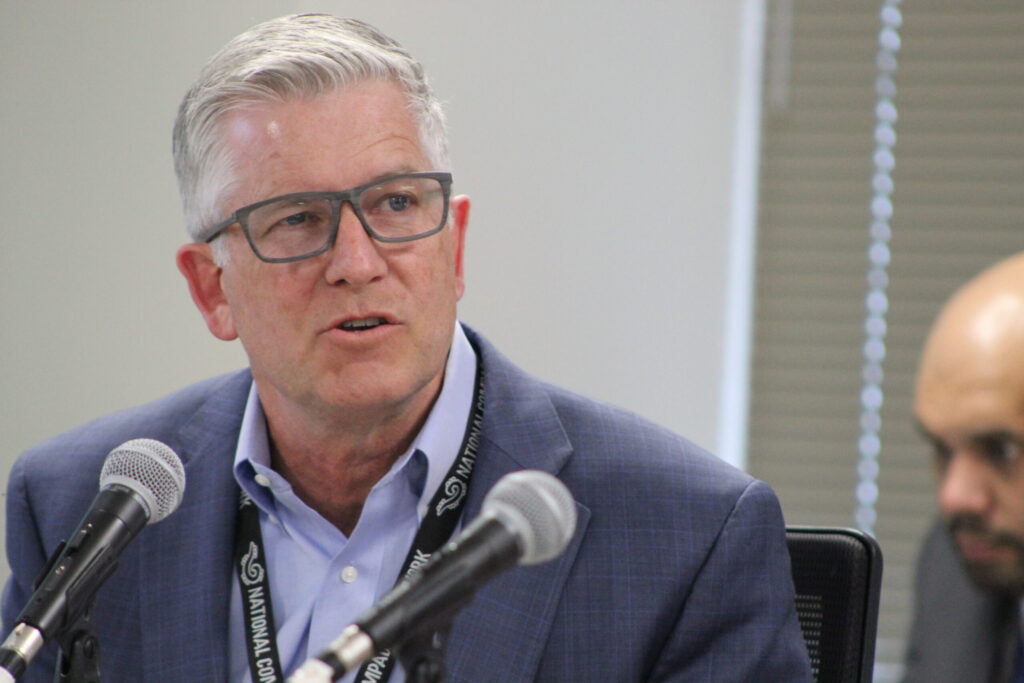A debate on ‘who is government?’ | CRONIN
Americans have been skeptical — if not hostile — to government bureaucracies since 1789.
Americans generally view big government as bad, remote, wasteful and unresponsive, if not irresponsible. Americans, going back to the Anti-Federalist movement and the Whiskey Rebellion, have scorned national bureaucracy and yearned for local control and decentralization.
“Bureaucratic man” has never been a hero in America. We are fond of lone cowboys, rugged individualists and even rogues — the Gary Cooper and John Wayne and Rambo types.
Government was once much smaller. But the Great Depression, World War II, the New Deal, the Cold War, the space race, the Great Society and Medicare, etc., have changed America and changed the size of government we have.
President Ronald Reagan went to Washington understandably suspicious most federal civil servants would be more loyal to New Deal and Great Society programs than to his conservative aspirations of retrenchment and reliance on the private sector or local government. He said “We need to get the bureaucracy off our backs and out of our pocketbooks.”
Reagan emphasized, in an oft-quoted line: “Government is not the solution to our problems. Government is the problem.”
Ford, Carter, Bush, Clinton and most of our presidents are on record decrying waste and excessive bureaucracy. Attacking the bureaucracy is as traditional as kissing babies in campaigns or marching in Fourth of July parades.
Stay up to speed: Sign up for daily opinion in your inbox Monday-Friday
People of different persuasions dislike various federal regulations and are aghast at cost-overruns for defense weapons like the F-35, or for the $400 Pentagon hammer.
Our federal government is large. Currently we employ 2.1 million civil servants in the regular government agencies, 900,000 civilians working for the Department of Defense and nearly 600,000 people in the United States Postal Service. Twenty percent of these “feds” live and work in the Washington D.C. area, but at least 80% live elsewhere around the country.
The number of federal civil servants per the national population has shrunk by a large margin in recent decades. Yet federal monies now subsidize a greater proportion of state and local bureaucracies than in the past. And federal use of outside contractors has grown substantially in recent years.
So, the federal presence in our lives is consequential — and invariably controversial.
Entrepreneur Elon Musk talked President Donald Trump — rather easily, it seems — into refueling Reagan’s attack on government waste and bureaucracies. “Chainsaw” Musk appears to believe some government agencies are criminal, making huge staff cuts imperative.
Whatever one thinks of Musk, he jumped in and has been hacking away with gusto. He has over-promised, yet he has found places to cut. In the process, he has, like President Trump, disparaged and intimidated the three-and-a-half million people who serve in the federal bureaucracy.
Two recently-published books encourage us to be more respectful and grateful to these civilian public servants:
- Michael Lewis, “Who is Government? The Untold Story of Public Service”(N.Y., Riverhead Books, 2025)
- Frances S. Collins, “The Road to Wisdom: On Truth, Science, Faith, and Trust” (N.Y., Little Brown, 2024)
Michael Lewis is the best-selling author of “Moneyball”, “Liar’s Poker”, “The Big Short” and other books. He invited six veteran journalists to write essays on extraordinary civil servants who defy the stereotype of wasteful, do-nothing “bureaucrats.”
These essays make you cheer on individuals who are selfless public servants, people who are saving lives, or saving money, or preparing us for space exploration. It is a cheerleading book, rooting for the faceless, placeless, civil servants.
Civil servants may get scorned publicly, but they do not have a public voice; they do not have press secretaries or campaign assistants. They often live in what amounts to a “witness protection program.” They work quietly and largely out of sight. If their work is classified, they cannot talk about it.
But Lewis and his colleagues discovered scientists at the Food and Drug Administration and investigative accountants at the Internal Revenue Service who really make a difference.
One of Lewis’ chapters celebrates the Director of the National Cemetery Administration (part of the Veterans Administration) Ron Walter and his colleagues, who help with the burials of more than 140,000 veterans or family members every year, and who tend to the perpetual memory of nearly 4 million other veterans. The National Cemetery Administration gets rave reviews from families it serves.
“Who is Government?” deserves to be widely read as a counterpoint to the current DOGE enterprise.
Dr. Frances S. Collins just recently retired from years of public service at the National Institutes of Health. He is a physician and geneticist who helped discover the cause of cystic fibrosis, and directed the Human Genome Project, which successfully sequenced the billions of nucleotides making up our DNA. He has helped lead national efforts on brain research, the “Cancer Moonshot”, and research on strategies to end addiction. He helped coordinate the remarkable vaccine breakthrough project, “Operation Warp Speed” to counter COVID-19.
Collins’ best-selling book makes a compelling case for the need for basic research and for federal funding for NIH, the National Science Foundation, and university research projects.
Collins is a devout Christian, and a devoted nonpartisan. His book is highly personal and sometimes quirky, yet it is a compelling call for us to be committed to the truth, and to invest in basic research and medical technologies. And what an example of public civil service he has been. Read him!
Several recent Hollywood movies offer vivid examples of civil servants who defy the stereotype and made a difference as bureaucrats:
- “Oppenheimer” (2023)
- “Killers of the Flower Moon” (2023)
- “Hidden Figures” (2016)
The Oscar-winning movie “Oppenheimer” examines the life of theoretical physicist J. Robert Oppenheimer, who directed the federally-funded research program to build the atomic bomb during World War II.
Oppenheimer was a professor of physics at Cal Tech and at the University of California at Berkeley. He was a brilliant scientist, but he was not especially political, nor was he an experienced administrator.
But in 1943 his country needed him, and he responded by building and leading the remarkable Manhattan Project, a federal research and development facility at the small, remote New Mexican village of Los Alamos. Oppenheimer recruited and inspired thousands of physicists and engineers from around the country to work with him and the U.S. Army to develop an atomic weapon before the Germans or Japanese could do so. As a result they helped to bring Word War II to a quicker end.
Oppenheimer’s personal life was complicated, and this Hollywood film devotes much time to that. But the larger message is a great intellectual and scientist accepted a federal civil service assignment to help his country.
“Killers of the Flower Moon” is a historical narrative about events that took place in Oklahoma in the 1920s. It is a searing and upsetting reminder of tragic injustices we have long tried to forget. The movie gives us a rotten villain, cattleman William King Hale (played by Robert DeNiro), who ruthlessly intimidates and steals the lucrative oil rights from local Osage Native-Americans. Hale is a brutal thug and murderer.
But we also get a hero, the young Tom White, a former Texas Ranger who joined as a federal agent deputized to investigate the case. He works under J. Edgar Hoover at the Department of Justice.
Federal agent White is patient, resilient and dedicated — and he does his job. He investigates, tracks down the villains, helps the prosecution and sees justice is served. He is a federal civil servant and a brave exemplar. When this film was first introduced at Cannes Film Festival, its director and lead actors earned a 9-minute standing ovation. It deserved that.
The 2016 film “Hidden Figures” has received less attention, yet it is an important film that recounts the largely unsung dedicated federal civil service of three African American women who were mathematicians at NASA.
We learn of the shameless discrimination they endured, but we also learn how their work contributed to the success of John Glenn’s 1962 space orbit on Friendship 7 — the first human to circle the earth. It is a moving story and a good parallel to the stories in Michael Lewis’ “Who is Government”?
Skepticism about bureaucracy is healthy. Bureaucracies can become entrenched and overly layered; they can overreach and delay or prevent progress. And reducing the U.S. national debt is justifiably a high national priority.
But the vast majority of civil servants are working to help their country succeed. In our ambitious “American Experiment,” the New Deal helped rescue the economy of the nation, the interstate highway system fueled economic growth and the National Parks Service provides a lasting legacy for all Americans. The Department of Defense, NSF, and NIH have been responsible for the development of computers, the MRI test, cancer treatments, the Global Positioning System, COVID-19 vaccines, space exploration and food safety. These federally funded programs have made our country stronger and safer and more prosperous.
Bashing bureaucrats is fun, popular and usually wrong. President John F. Kennedy was right when he said, “Let the public service be a proud and lively career. And let every man and woman in any area of our national government, in any branch, at any level, be able to say with pride and with honor in future years: ‘I served the United States government in that hour of our nation’s need.'”
Tom Cronin regular writes on politics and public affairs. His recently published book is “Fireside Chats of a Retired College President” (Booklocker, 2025).











